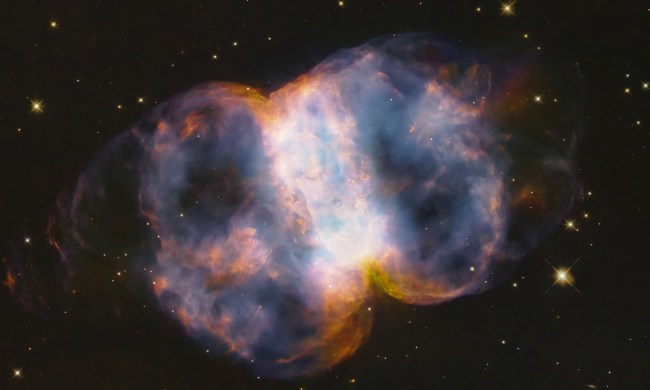The Hubble Space Telescope has captured a new and gorgeous image of the planet Saturn, taken during the northern hemisphere’s summer.
Hubble previously imaged Saturn last year, showing off the planet’s rings and some of its icy moons. This previous image was taken on the planet’s close approach, at 845 million miles away from Earth. The new image is taken from even closer, at 839 million miles away.

Saturn has seasons like those on Earth, which occur due to the planet being tilted on its axis, so some parts are closer to the sun than other parts at any given time. It’s summer here on Saturn’s northern hemisphere, and scientists used the data to investigate the weather to be found on the planet.
The researchers found several small atmospheric storms which, unlike the epic storms raging for centuries on Jupiter, are “are transient features that appear to come and go with each yearly Hubble observation,” according to the scientists.
Another notable feature of this image is the slight red tint over the northern hemisphere, while the rest of the planet is toned in yellow and brown due to the composition of its atmosphere. The researchers think this red tint could be due either to the higher levels of heat from the sun this area receives during summer causing a change in the atmospheric circulation, or due to the increased light causing a change in the way the chemicals in the atmosphere appear.
“It’s amazing that even over a few years, we’re seeing seasonal changes on Saturn,” lead investigator Amy Simon of NASA’s Goddard Space Flight Center in Greenbelt, Maryland, said in a statement.
The Hubble scientists also released this annotated “compass” image, showing some of Saturn’s moons labeled along with a scale.




